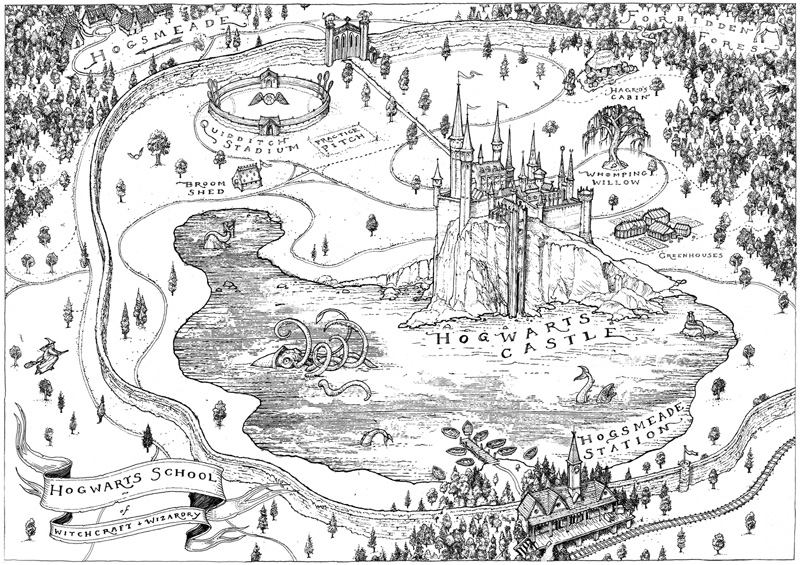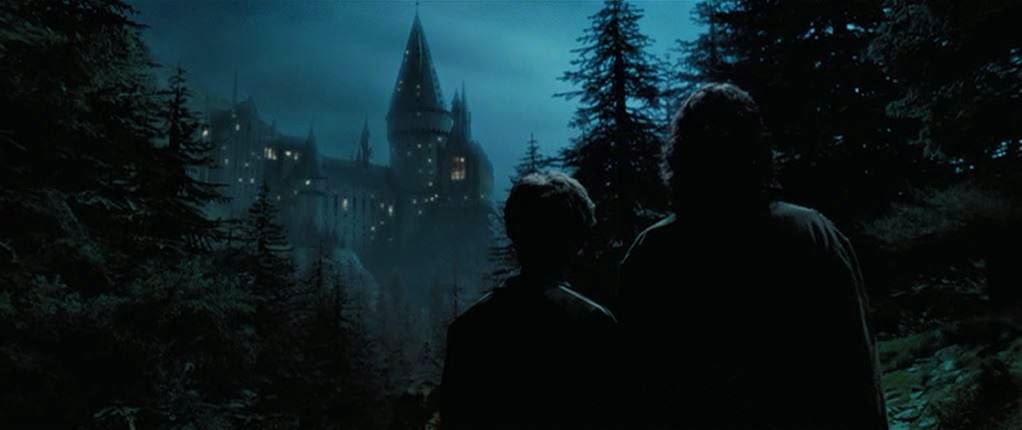Did We Really Need a Map in the 20th-Anniversary “Philosopher’s Stone” Editions?
Admittedly, Sorcerer’s Stone is far from my favorite book in the Harry Potter series. To me, the books get better as they go along, if you discard all the murder, torture, possession, etc. Nevertheless, with the 20th anniversary of UK publication this past June, I had to purchase a newly released House edition of the novel. And so I carefully selected my Gryffindor edition of the print, admired the embossed hardcover front, brushed the sprayed pages, and inhaled the smell of a freshly printed book. Ink carved into words onto flattened trees. For its many bonus features, the new editions of Philosopher’s Stone are certainly worth buying. Who couldn’t possibly want more Potter? However, I did have my qualms about some of the additional content featured in this limited edition, specifically the map.
I am the kind of fan who will take anything that J.K. Rowling throws at them, even down to the smallest of tweets revealing new information. A new snippet is like a Golden Snitch, and I will do anything to catch it. And while there are fascinating new points uncovered in this edition (who knew that Flitwick and Sprout were together at one point?!), the map is where I draw the line at what we need to see. My question is, do we really need a wizarding world map?

Many fantasy books take to using maps in order to set the scene. Maps in fiction give context to the story as readers and characters embark on a new adventure. One of the best examples of this is in Tolkien’s The Lord of the RIngs trilogy. Of course, there are positives to featuring maps in fiction, namely allowing the reader to track a protagonist’s journey, but also, maps provide us with a visual understanding of worlds that are so very different from our own. We don’t have hobbits, yellow brick roads, and lands made of chocolate in our dimension of Earth. In worlds and countries that contrast ours so drastically, it makes sense to have maps to provide a more tangible expression of a mythical place.
Despite this, I personally feel strong disagreement with the notion that we need a map for the Harry Potter series. Of course, there is the Marauder’s Map, but that in itself is a map within the story that is often pivotal to events occurring. But Harry Potter contrasts traditional fantasy in a multitude of ways, primarily through a blurring distinction between fantasy and modern-day reality. The series, while being mainly set in a Scottish castle with moving staircases, werewolves in the Forbidden Forest, and a giant squid in its lake, is set in the United Kingdom. Throughout the series, Rowling draws into the fact that these events are occurring not in another world, but alongside us, which is all the more reason why the messages that parallel our history are so prevalent.
Presumably, if you’re reading this, then aren’t you a keen Potter fan? If you identify as more avid among us, then you will have mentally engraved your own map of this world that will differ from that of any other fan. That alone is magical. In an interview with Rowling, Oprah Winfrey once remarked that “the greatest gift the Harry Potter series has given to the world is the freedom to use our imaginations.” If that is what we have been given, then why not use that gift? One of the beauties of the wizarding world is that it’s a place so many of us have considered to be a destination of escapism, where we can imagine how the world is as we personally think it should be. We don’t need a map to tell us how to think 20 years on.

As Rowling once said, “We have the power to imagine better” than what is merely given to us. A map is just a map, but imagination is so much more than to be sketched onto a double-page spread for all the world to see.


